Frida Kahlo was one of the most famous Mexican artists of the 1900s. She was especially recognized for her disturbing style and her many smileless self-portraits. She often included skulls, daggers, and bleeding hearts in her paintings.

Who was Frida Kahlo?
Table of Contents
Frida Kahlo de Rivera (1907-1954) lived with her parents and her three sisters in a blue house that is currently a museum.
Frida Kahlo’s childhood
Kahlo was born and died in the same “Blue House” in Mexico City. Her father was of German descent and her mother was Amerindian. When Frida was 18 years old, she was riding a bus that crashed into a tram. The young girl spent three months in a cast that covered her entire body. Despite having fully regained her ability to walk she spent most of her life suffering.
Although she was born in 1907, she told people that she was born 3 years later because she apparently wanted her life to be associated with the Mexican revolution. Frida was a fierce nationalist. This is evidenced in her art by the presence of particular symbols and objects of Mexican and Amerindian popular culture. Many describe Frida as a surrealist. She claimed that she was not painting dreams, but the painful reality of her life.

Frida Kahlo’s Family and Education
Frida Kahlo’s father, Wilhelm (also called Guillermo in Spanish) was a German photographer who had immigrated to Mexico. He met Kahlo’s mother, Matilde, and they were subsequently married. Wilhelm and Matilde had two daughters older than Frida, Matilde and Adriana, and a younger daughter, Cristina, who was born a year after Frida.
Why did Kahlo become a painter?
Around the age of six, Frida contracted polio, which is a disease that affects the spinal cord by atrophying the muscles. This caused her a paralysis that led to her being bedridden for nine months. While she was recovering from the illness she limped when walking. She had damaged her right leg and foot. Her father, to contribute to her recovery, encouraged her to play very unusual sports for a girl at that time. He encouraged her to play soccer, swim, and even fight.
In 1922, Frida enrolled in the famous National Preparatory School. She was one of the few female students there to become famous. She was recognized for her jovial spirit and her love of colorful and traditional clothing and jewelry.
While at school, Kahlo came into contact with a group of politically and intellectually oriented students. She thus she became a political activist. Kahlo joined the Young Communist League and the Mexican Communist Party.
Frida Kahlo’s Artistic Career
Although she never considered herself surrealist in 1938, she became friends with one of the leading figures in that literary and artistic movement, André Breton. That same year she had a major exhibition in a gallery in New York City. About half of the 25 paintings on display at the exhibition were sold. Kahlo received commissions, including one from the famous magazine editor Clare Boothe Luce as a result of the show.
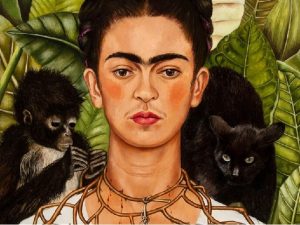
What did Frida paint?
Kahlo changed her professional career from medicine after a serious accident. As part of her recovery, Kahlo underwent thirty-five operations. Her father lent her a box of oil paints and some brushes and her mother had a special easel built so she could paint in her bed.
Frida was inspired by traditional Mexican art because she was proud of her heritage. Mexican art is filled with symbolism in which bright colors predominate, including flowers, dances, and music. Kahlo painted animals in her self-portraits, such as monkeys, parrots, a hairless dog, and a deer.
Frida’s Influence and Legacy
In 1939, Kahlo went to live in Paris for a time. There she exhibited some of her paintings and developed friendships with artists such as Marcel Duchamp and Pablo Picasso.
Although she received a commission from the Mexican government for five portraits of important Mexican women in 1941, she was unable to complete the project. She lost her beloved father that year and continued to suffer from chronic health problems. Despite her health problems and personal challenges, her work continued to grow in popularity and she was featured in numerous group shows around this time.
In 1953, she held her first show in Mexico. While she was bedridden at the time, she did not miss the opening of the exhibition. She attended by ambulance, spent the night chatting and celebrating with event attendees from the comfort of a four-poster bed that had been set up in the gallery for her.
After Kahlo’s death, the feminist movement of the 1970s sparked a renewed interest in her life and work, as she Kahlo was seen by many as an icon of female creativity.
Also read: Parts of Plants
Frida Kahlo Paintings for children
Many of Frida Kahlo’s works were self-portraits. Some of the most notable paintings of her include:
“Frida and Diego Rivera” (1931)
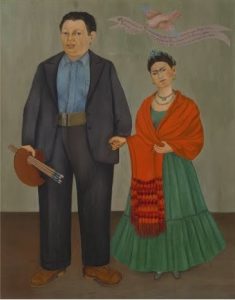
Kahlo exhibited this painting at the Sixth Annual Exhibition of the Society of Women Artists in San Francisco, the city where she lived with Rivera at the time. At work, painted two years after the couple married, Kahlo lightly holds Rivera’s hand while she holds a palette and brushes with the other. It’s a stiff and formal pose that hints at the couple’s future tumultuous relationship. The work is now in the San Francisco Museum of Modern Art.
“Henry Ford Hospital” (1932)

In 1932, Kahlo incorporated graphic and surreal elements into her work. In this painting, Kahlo appears nude in a hospital bed with various items, a fetus, a snail, a flower, a pelvis and others. All floating around him connected with red threads that resemble veins. As with her previous self-portraits, this work is very personal, depicting the story of her second miscarriage.
Frida Kahlo, in her paintings, expressed her feelings and her ideology along with the pain caused by the surgeries performed after the accident. She also painted typical Mexican customs, landscapes and situations in her life where her family and friends appear in her pictures.
Read also
“The suicide of Dorothy Hale” (1939)
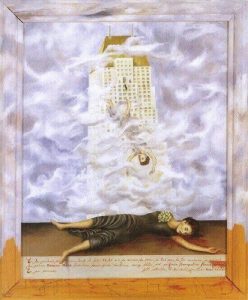
Kahlo was asked to paint a portrait of her mutual friend with Luce, actress Dorothy Hale who had committed suicide earlier that year by jumping from a tall building. The painting was intended as a gift to Hale’s grieving mother. However, instead of a traditional portrait, Kahlo painted the story of Hale’s tragic leap. Although the work has been appreciated by critics, her patron was horrified to see the finished painting.
“The two Fridas” (1939)

One of Kahlo’s most famous works shows two versions of the artist sitting side by side with both hearts exposed. One Frida is dressed mostly in white with a damaged heart and bloodstains on her clothes. The other wears brightly colored clothes and has an intact heart. These figures are believed to represent the “loveless” and “beloved” versions of Kahlo.
“The broken column” (1944)
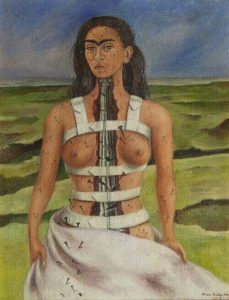
Kahlo shared her physical challenges through her art again with this painting, which depicted a nearly nude Frida split in the middle of her, revealing her spine as a shattered decorative column. She also wears a surgical brace and her skin is studded with studs or nails. Around this time, Kahlo underwent several surgeries and wore special corsets to try to repair her back. She would continue to seek a variety of treatments for her chronic physical pain with little success.
Great Events: Frida and Diego Rivera
Frida’s life changed forever on September 17, 1925. While she was riding a bus in the city, her bus was hit by a streetcar. Several passengers died and she, Frida, suffered a severe injury that would send her to the hospital for a long time and confine her to bed for several months. Her injuries caused him ongoing pain and illness for the rest of her life and also ended her future in medicine.
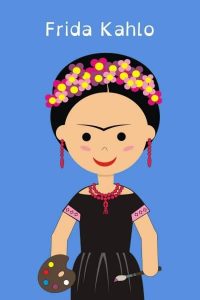
During her recovery, Frida painted portraits of herself and of her close family and friends in most cases. In 1927, when Frida was finally able to socialize again, she attended a party where she met the much older and famous Mexican artist Diego Rivera. Diego, a member of the Communist Party, married Frida in 1929. Diego and Frida had a difficult marriage, even getting divorced at one point, although they eventually remarried.
Frida’s style, artistically and personally, began to change during this time. Frida began wearing traditional Mexican clothing to emphasize her connection to her roots and culture. Diego, of Mexican origin, was very supportive of Frida’s Mexican heritage and dress and also encouraged her art. Both were politically active, although they eventually left the communist party. Frida died in 1954 at the age of 47, after suffering further illness and suffering.
Frida Kahlo’s accident
On September 17, 1925, Kahlo and Alejandro Gómez Arias, a friend from school with whom she was romantically involved, were riding together on a bus when the vehicle collided with a streetcar. As a result of the collision, Kahlo was pierced by a steel railing, which got into her hip and exited the other side. She suffered several serious injuries as a result, including fractures to her spine and pelvis.
After staying at the Red Cross Hospital in Mexico City for several weeks, Kahlo returned home to continue her recovery. She began painting during her recovery and completed her first self-portrait the following year, which she gifted to Gómez Arias.
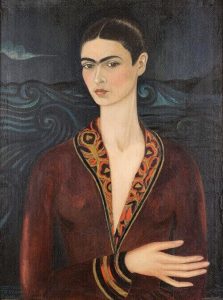
Frida Kahlo’s death
About a week after her 47th birthday, Kahlo passed away on July 13, 1954 in her beloved Blue House. There has been some speculation regarding the nature of her death. It was reported that she was caused by a pulmonary embolism, but there have also been stories about a possible suicide.
Kahlo’s health problems became almost exhausting in 1950. After she was diagnosed with gangrene on her right foot, Kahlo spent nine months in the hospital and had several operations during this time. She continued to paint and support political causes despite her limited mobility. In 1953, part of Kahlo’s right leg was amputated to stop the spread of gangrene.
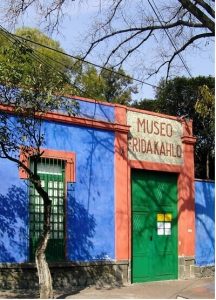
Deeply depressed, Kahlo was hospitalized again in April 1954 for health problems or, as some reports indicated, for attempted suicide. She returned to the hospital two months later with bronchial pneumonia. Regardless of her physical condition, Kahlo didn’t let that get in the way of her political activism. Her last public appearance was a demonstration against the overthrow of US-backed Guatemalan President Jacobo Arbenz on July 2.
Read also: Mayans for Kids
